In the vast, swirling expanse of the North Pacific Ocean lies a phenomenon as intriguing as it is troubling—the Great Pacific Garbage Patch (GPGP). This colossal debris vortex stretching from California to Japan has become the poster child for the planet’s plastic pollution crisis.
Yet, amidst this dire scenario, a project called “The Ocean Cleanup” has emerged as a beacon of hope and a subject of debate.

The massive island of trash
The GPGP is no ordinary island. It’s an immense floating trash vortex spanning approximately 617,763.454 square miles, with Hawaii nestled in its midst.
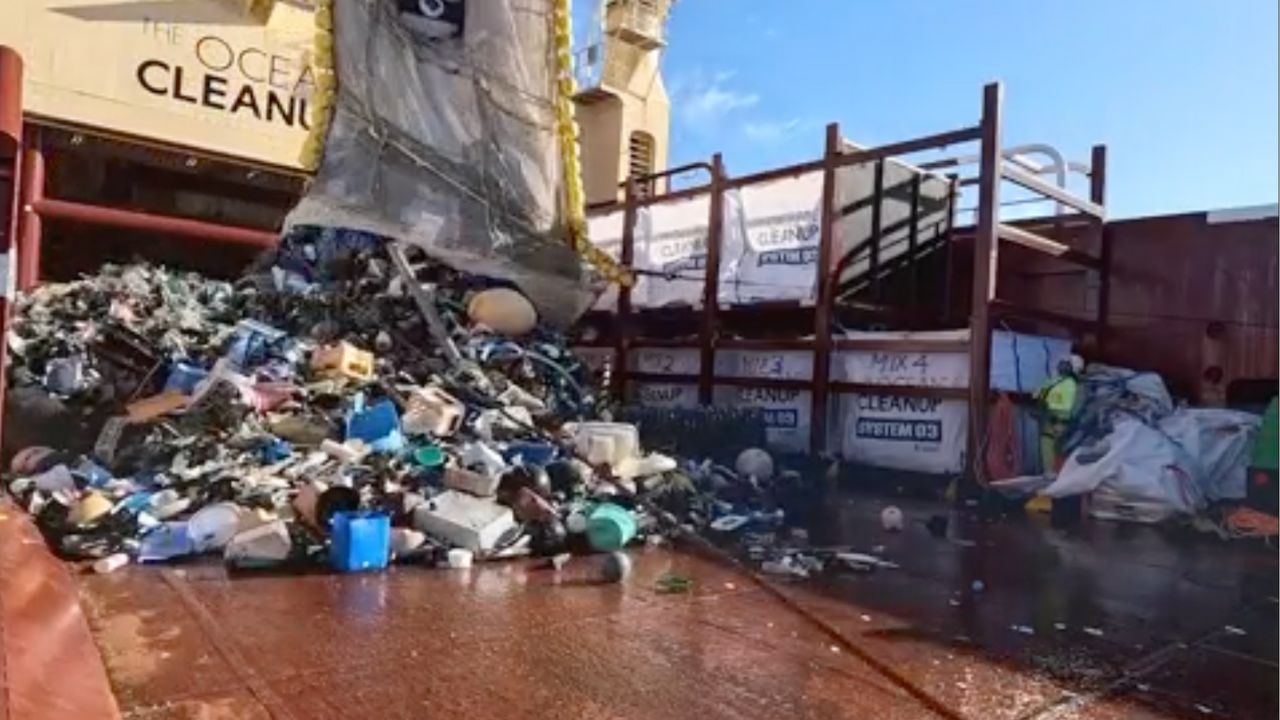
Credit: The Ocean Cleanup

Credit: The Ocean Cleanup
The majority of this debris is plastic, ranging in size from large discarded fishing nets to microplastics that pose a more insidious threat.

Credit: The Ocean Cleanup
While only 8% of the GPGP’s total mass, these tiny plastic fragments represent 94% of the estimated 1.8 trillion pieces of plastic floating in this marine desert. The presence of microplastics highlights the immense challenge of addressing oceanic plastic pollution, as these particles continue to break down but never fully disappear, threatening marine life in profound ways.
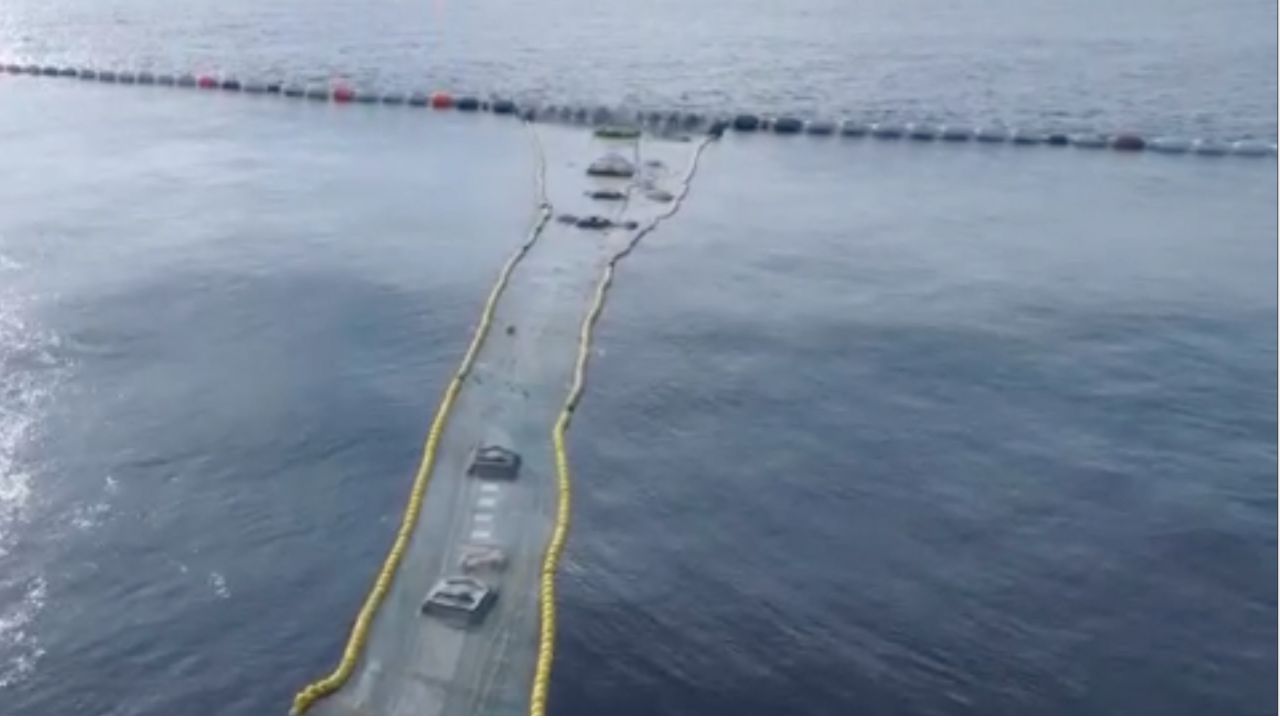
Credit: The Ocean Cleanup
MORE: THIS AI ROBOT GARBAGE PICKER CAN SORT OVER 500 TYPES OF TRASH IN SECONDS
The Ocean Cleanup’s “Jenny” technology
Enter The Ocean Cleanup, a nonprofit that uses technology to combat oceanic and riverine trash. Central to their mission is System 002, affectionately dubbed “Jenny.” This innovative U-shaped catchment system, towed by two fuel-powered ships, trawls the ocean surface, collecting debris in its path. Once Jenny is full, the garbage is transferred to a larger vessel and taken ashore for processing.
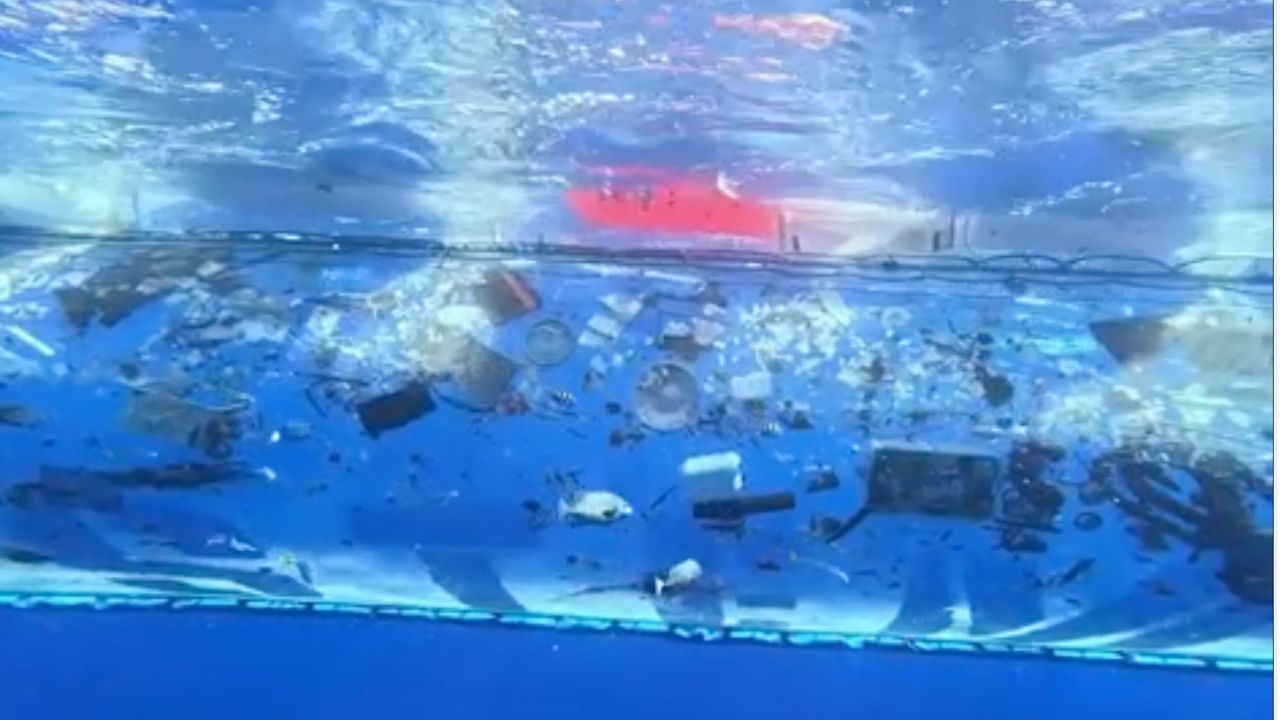
Credit: The Ocean Cleanup
As The Ocean Cleanup evolves, so too do its methods. The upcoming System 03, or “Josh,” promises even greater cleanups, boasting enhancements like the “MASH” — a marine animal safety hatch designed to safeguard sea life during the collection process.
System 03 features an expansive floating barrier spanning roughly 1.4 miles, strategically positioned between a pair of vessels towing it at a reduced speed. Attached to this barrier is a downward-reaching screen that plunges 13 feet beneath the water’s surface, targeting the zone where the majority of floating plastic debris is typically found.
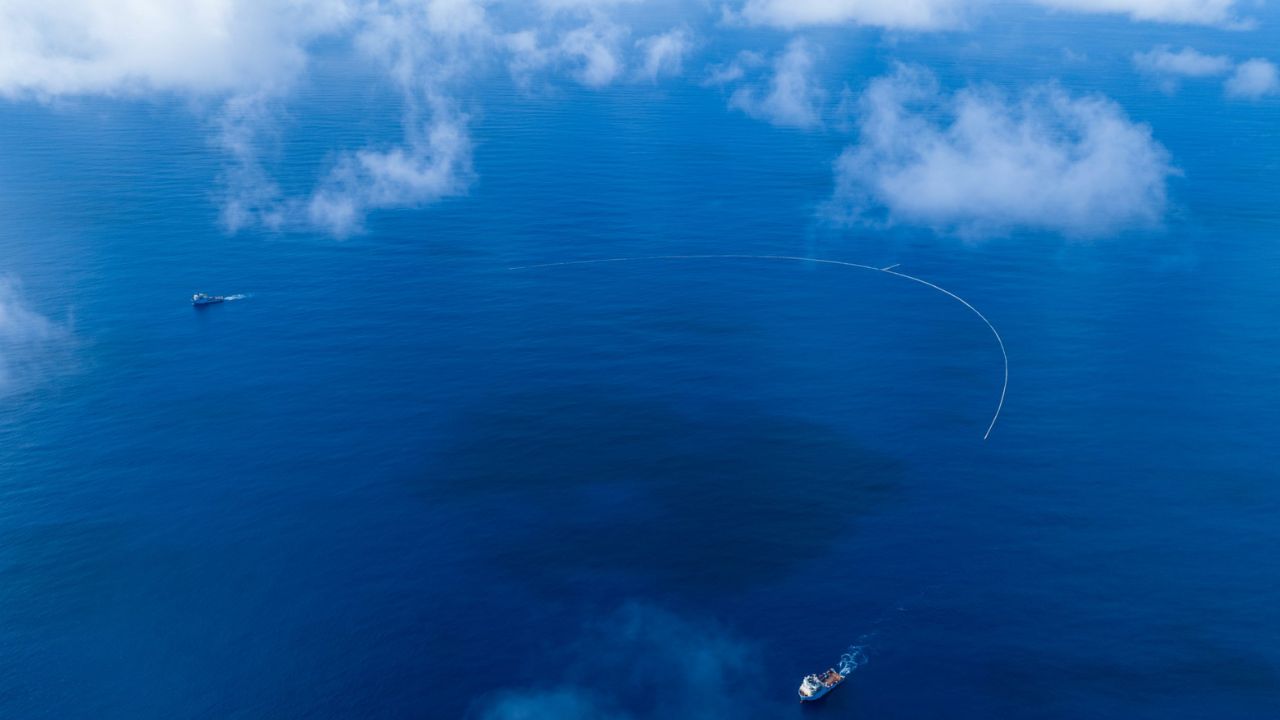
Credit: The Ocean Cleanup
MORE: AI ROBOT CAN TRIM, EDGE, AND BLOW YOUR LAWN FOR YOU
What becomes of the collected trash?
A crucial question looms: What happens to the trash once it’s hauled ashore? The Ocean Cleanup asserts that a significant portion of the plastic is recycled and transformed into “durable and valuable” products. The remnants, deemed unrecyclable, are incinerated to generate electricity—a process known as thermal recycling.
However, this approach is not without its critics. Concerns have been raised about the optimistic view of plastic recycling and the potential environmental impact of thermal recycling, including the release of toxins.

Credit: The Ocean Cleanup
MORE: DIVE INTO THE SEA WITH THIS STATE-OF-THE-ART UNDERWATER DRONE
The debate and the path forward
The Ocean Cleanup’s efforts are not unchallenged. Critics argue that while removing trash from the oceans is beneficial, the ultimate solution lies in preventing plastic from entering the waters in the first place.

Credit: The Ocean Cleanup
Ocean scientists and environmental advocates emphasize the need to reduce our reliance on plastic and to intercept it before it reaches the ocean, citing projects like river interceptors and initiatives like Baltimore’s Mr. Trash Wheel.
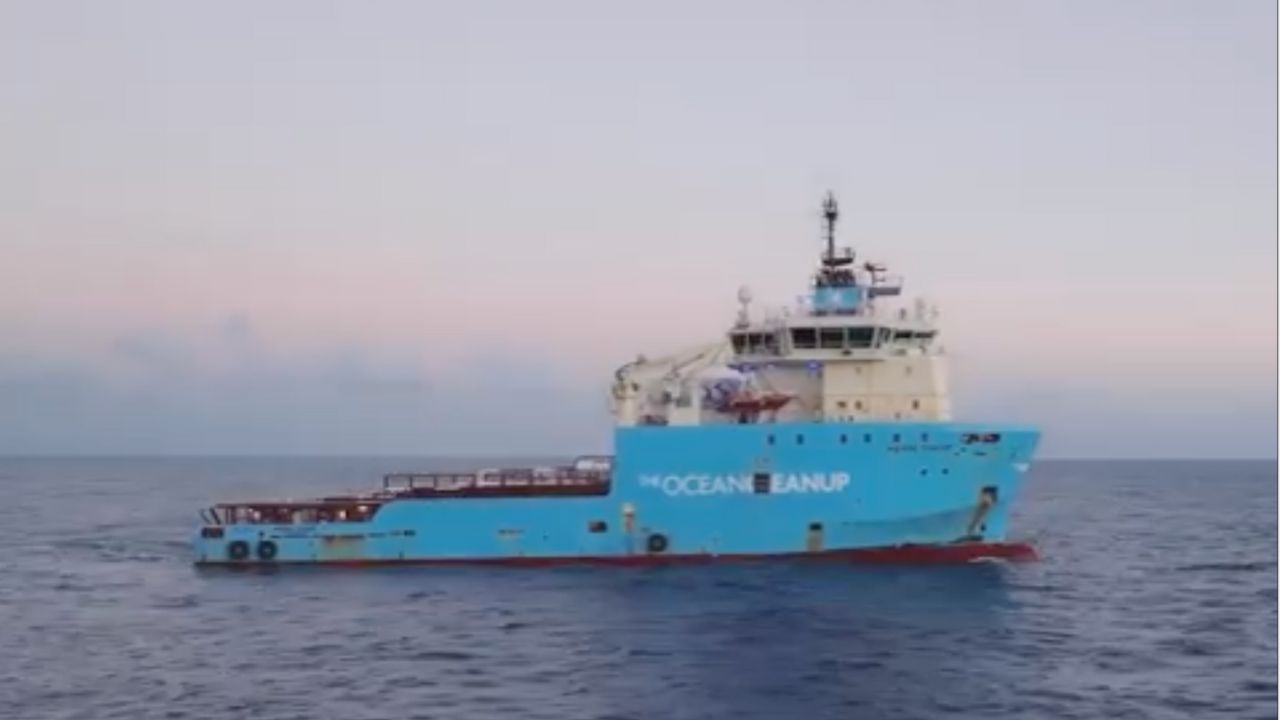
Credit: The Ocean Cleanup
Kurt’s key takeaways
The Great Pacific Garbage Patch and The Ocean Cleanup’s efforts to address it present a microcosm of the broader challenges and debates surrounding oceanic plastic pollution. While the organization’s innovative approaches offer hope, they also spark important conversations about the most effective strategies for preserving our oceans. As we navigate these turbulent waters, the tale of the GPGP serves as a poignant reminder of human activity’s impact on the natural world and the urgent need for collective action to safeguard our planet’s future.
Do you believe technological interventions like ‘The Ocean Cleanup’ are sustainable long-term solutions, or should we focus more on preventive measures? Let us know in the comments below.
FOR MORE OF MY TECH TIPS & SECURITY ALERTS, SUBSCRIBE TO MY FREE CYBERGUY REPORT NEWSLETTER HERE
🛍️ SHOPPING GUIDES:
KIDS | MEN | WOMEN | TEENS | PETS |
FOR THOSE WHO LOVE:
COOKING | COFFEE | TOOLS | TRAVEL | WINE |
DEVICES:
LAPTOPS | TABLETS | PRINTERS | DESKTOPS | MONITORS | EARBUDS | HEADPHONES | KINDLES | SOUNDBARS | KINDLES | DRONES |
ACCESSORIES:
CAR | KITCHEN | LAPTOP | KEYBOARDS | PHONE | TRAVEL | KEEP IT COZY |
PERSONAL GIFTS:
PHOTOBOOKS | DIGITAL PHOTO FRAMES |
SECURITY
ANTIVIRUS | VPN | SECURE EMAIL |
CAN'T GO WRONG WITH THESE:




1 comment
I love this story. What admirable work they’re doing. I try to use less plastic but it’s
everywhere ! GPGV – Great Pacific Garbage Vortex ? Sux for Hawaii ! I’ve seen biodegradible packaging made from cornstarch which is brilliant.